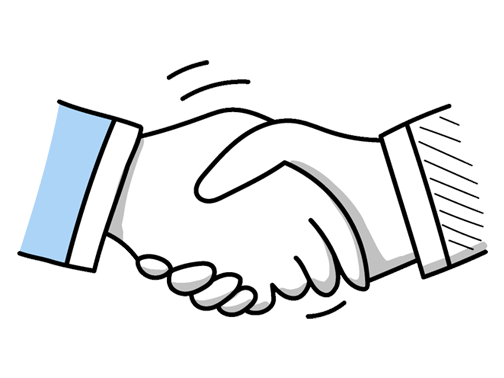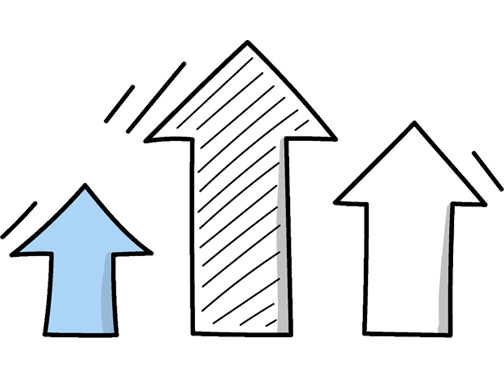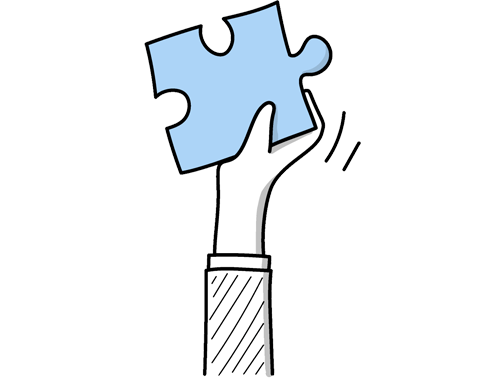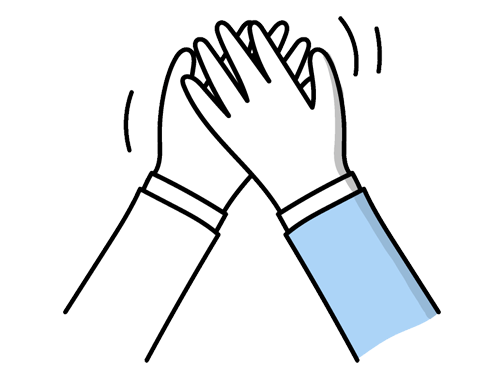Retail Merchandiser Interview Questions (2025 Guide)
Find out common Retail Merchandiser questions, how to answer, and tips for your next job interview
Practice Interviews Online - Identify your strengths and weakness in a realistic Retail Merchandiser mock interview, under 10 minutes
Practice Now »Retail Merchandiser Interview Questions
Questions like this assess your problem-solving skills and attention to detail in managing inventory accurately. You need to explain that you investigate the cause by reviewing deliveries and stock movements, then correct the records after verifying the counts, and regularly audit stock to prevent future discrepancies.
Example: When I notice differences between inventory records and actual stock, I first look into why it happened—whether it’s a scanning error, misplaced items, or something else. Then, I make sure to correct the records and organise the stock properly to prevent it happening again. Paying close attention to detail helps keep everything accurate, which means smoother operations and happier customers. In my last role, this approach helped reduce stock discrepancies significantly.
What they want to know is how you use planning, creativity, and adaptability to make products stand out and boost sales. You need to explain how you organize products to catch attention, use design elements like color and lighting to create appealing displays, and adjust them based on feedback or sales results.
Example: I usually start by thinking about the flow and what catches the eye, arranging products so they feel inviting and easy to browse. I like to mix colours and textures to make displays stand out, sometimes using props or signage for extra interest. I keep an eye on how customers respond and check sales trends to tweak things—if a display isn’t working, I’m quick to adjust it to boost engagement.
What they want to know is how you identify problems and use creativity to improve product visibility, which is crucial in retail merchandising to boost sales. You need to describe a specific challenge you faced, explain your innovative approach to solving it, and share the positive results that followed.
Example: In a previous role, I noticed a new product was overlooked because it was placed alongside similar, more established items. To make it stand out, I suggested repositioning it at eye level with clear signage highlighting its unique features. This small change boosted customer interest and sales noticeably within weeks, showing how thoughtful placement and presentation can really enhance product visibility.
Interviewers ask this question to see how you solve problems that affect sales and customer experience. You need to explain how you find the root cause, fix the issue quickly, and check if the change worked, adjusting as necessary.
Example: When I notice a problem with a product display, I first take a moment to understand what’s causing it—whether it’s stock levels, signage, or layout. Then, I act quickly to fix it, like rearranging items or refreshing the display to catch customers’ attention. Afterward, I keep an eye on it to make sure the changes are working and make tweaks if needed to keep everything looking its best.
Interviewers ask this question to see how you approach and resolve real-world challenges in merchandising, showing your problem-solving skills and impact on sales. You need to clearly describe the problem, explain the actions you took to fix it, and share the positive results of your solution.
Example: In a previous role, I noticed a key product wasn’t selling well despite prominent placement. I reviewed sales data and gathered customer feedback, discovering the packaging was confusing shoppers. I worked with the supplier to update the design and rearranged the display for clarity. As a result, sales improved noticeably, and the product became one of the top sellers in that category within a month.
Hiring managers ask this question to see if you can keep inventory accurate and prevent problems like stockouts or excess goods. You need to say that you regularly track inventory using organized methods, anticipate demand changes to adjust orders proactively, and communicate closely with suppliers and store teams to ensure timely replenishment.
Example: When managing stock, I keep a close eye on inventory to spot trends early and avoid running low or having too much. I regularly communicate with suppliers and store teams to coordinate timely deliveries and adjust orders based on demand. For example, during busy seasons, I’ll increase orders slightly while making sure there’s space to store everything efficiently, ensuring shelves stay well-stocked without overcrowding.
This interview question helps the employer understand how you use strategic thinking to maximize sales through product placement. You need to say that you analyze customer traffic to place popular items in busy areas, group related products together to boost add-on sales, and update displays regularly to reflect seasonal trends and promotions.
Example: When choosing where to place products in a store, I look at how customers move around, ensuring popular items are easy to find. I also group related products together, like placing snacks near drinks to encourage more purchases. Plus, I adjust displays to reflect the season or any current promotions, such as highlighting summer essentials when the weather warms up, to keep the store feeling fresh and relevant.
Questions like this assess your understanding of key performance indicators in merchandising. You need to say that you measure success by tracking sales growth, inventory turnover, and customer engagement to ensure the strategy effectively drives product movement and meets business goals.
Example: Measuring the success of a merchandising strategy often comes down to sales performance and customer engagement. If products are moving well and customers seem drawn to displays, that’s a good sign. I also look at stock levels to ensure items aren’t over or understocked, and gather informal feedback from staff and shoppers to spot what’s working or needs tweaking. For example, a simple change in product placement can noticeably boost interest and sales.
Interviewers ask this question to see how you lead and keep your team focused on goals despite challenges. You should explain that you communicate clear expectations, recognize achievements, and provide support to keep morale high and productivity steady.
Example: I believe keeping the team motivated starts with clear communication and recognising their efforts. I like to check in regularly, listen to any concerns, and celebrate small wins to boost morale. For example, when we met tight deadlines before, I made sure to acknowledge everyone's hard work, which kept spirits high and productivity steady. Creating a supportive environment helps the team stay engaged and focused on our goals.
This question helps the interviewer see how you keep your team aligned and informed to ensure smooth operations. You need to say that you communicate clearly and regularly, listen actively to feedback, and use methods like daily briefings or meetings to keep everyone updated.
Example: I make sure to keep messages straightforward and easy to understand, whether it’s in-person or via email. I also take time to really listen to my team’s ideas and concerns, which helps build trust. For example, I often check in mid-shift to update everyone on changes or feedback, ensuring no one feels out of the loop and we all stay on the same page.
This question aims to assess your leadership experience and ability to manage a team effectively. You need to clearly state how many merchandisers you led and briefly describe your role in coordinating and motivating the team.
Example: In my previous role, I led a team of six merchandisers, coordinating daily tasks and ensuring targets were met efficiently. I focused on clear communication and motivating the team through regular check-ins and support. For example, by encouraging open feedback, we improved store layouts which boosted sales. It was rewarding to see how a well-aligned team could make a real difference on the shop floor.
Employers ask this question to see if you’re willing to exceed basic job duties and provide exceptional service. In your answer, describe a specific situation where you took extra steps to help a customer and explain the positive outcome.
Example: In my previous role, a customer was struggling to find a specific product during a busy period. I took the time to check stock in the back and even called a nearby store to reserve it for them. Seeing their relief and appreciation reminded me how small gestures can make a big difference. Going the extra mile isn’t just about sales; it’s about building trust and loyalty.
This interview question helps assess your ability to listen to customers and adapt your strategies to meet their needs. You need to explain that you collect and analyze feedback regularly, then adjust product placement or selection to improve customer satisfaction and sales.
Example: I always pay close attention to what customers are saying, whether it’s through direct conversations or feedback collected by the store. If I notice recurring comments about certain products or displays, I adjust the layout or stock accordingly. For example, when customers mentioned a hard-to-find item, I worked to position it more prominently, which helped boost sales and satisfaction. It’s about staying responsive and making sure their voices shape what they see.
Interviewers ask this question to see how well you communicate and work with others to achieve common goals. You need to explain how you clearly shared merchandising goals, coordinated tasks with different teams, and handled any challenges or conflicts to ensure success.
Example: In my previous role, I worked closely with marketing and store teams to launch a new product display. We had different priorities at first, but by scheduling regular check-ins and openly discussing concerns, we aligned on timelines and designs. When a last-minute stock issue arose, I coordinated quickly with logistics to adjust the plan, ensuring the display was ready on time and drove strong customer interest.
This interview question is asked to see if you proactively keep up with industry changes and can adapt your strategies accordingly. You need to say that you regularly follow trade publications, attend industry events, and analyze customer behavior to stay informed about new trends.
Example: I keep an eye on industry blogs and retail news to spot new trends early. Visiting stores regularly helps me see what’s working on the floor and how customers respond. I also find chatting with colleagues and suppliers insightful since they often share fresh ideas. This mix of research and real-world observation helps me stay ahead and bring relevant strategies to any merchandising role.
Hiring managers ask this to see how you fit into a team and contribute to its success. You should say you take initiative by organizing tasks, communicate clearly with others, and help maintain a positive, cooperative environment.
Example: In team settings, I usually take the lead in organising tasks and making sure everyone is clear on their role. I’m comfortable speaking up when ideas come to mind, but I also listen carefully to others to keep things running smoothly. For example, in my last role, I helped the team adjust quickly to last-minute changes, which kept our project on track and morale high.
This interview question assesses your problem-solving and customer service skills when faced with dissatisfaction. You need to say that you listen to the customer's concerns, empathize with them, and quickly adjust the display to improve their experience while maintaining store standards.
Example: If a customer is unhappy with a product display, I’d first listen to their concerns to understand what’s wrong. Then, I’d explain any reasons behind the setup and see if there’s a quick way to adjust it for them. For example, if items are hard to reach, I’d rearrange them or offer help finding what they need, making sure they leave positive about their experience.
This interview question helps the employer understand your versatility and how you tailor merchandising strategies for different products. You need to clearly state the types of products you've worked with and briefly explain how you adjusted your approach to suit each product type.
Example: In my previous roles, I’ve worked with a variety of products, from FMCG items like snacks and beverages to household goods and seasonal merchandise. I always tailor my displays to highlight key features—like freshness for food or durability for home products. I’ve also coordinated closely with suppliers to ensure brand guidelines are met, making sure each product looks its best on the shelf and appeals to the target customer.
This question helps the interviewer see how you manage difficult situations while keeping customers satisfied and maintaining store standards. You need to say that you listen carefully to understand the complaint, offer a quick solution or alternative, and stay calm and polite throughout the interaction.
Example: When a customer raises concerns about product availability or display, I first listen carefully to understand their issue. Then, I calmly offer alternatives or let them know when the item will be back in stock. I always keep a positive tone to make sure they feel valued. For example, if a shelf looks untidy, I’d quickly rearrange it while explaining what’s available nearby to help them find what they need.
Hiring managers ask this to see if you prioritize customer satisfaction and understand how your role impacts sales. You need to say that you focus on keeping displays organized and attractive while being approachable and attentive to customer needs.
Example: Creating a positive shopping experience starts with understanding what customers need and making products easy to find. I make sure shelves are tidy and well-stocked, so customers don’t feel frustrated. For example, if I notice a popular item running low, I restock it quickly to avoid disappointment. I also keep an approachable attitude to help if anyone has questions, ensuring they leave feeling satisfied and valued.
What they want to know is if you have relevant hands-on experience and understand key merchandising tasks. You need to briefly describe your past roles, highlight specific duties like stock management or display setup, and show how you contributed to sales or store appearance.
Example: In my previous role, I managed product displays to boost sales and improve customer experience. I regularly analysed sales trends to adjust stock levels and collaborated with store teams for smooth promotions. For example, I helped set up seasonal layouts that increased foot traffic and made products more appealing, which led to noticeable sales growth without overstocking. It was hands-on and taught me a lot about balancing creativity with practical planning.
Hiring managers ask this question to see if you can manage disagreements productively and keep the team working well together. You need to say that you listen carefully to understand everyone’s viewpoint, stay calm and professional, and work with the team to find solutions that benefit all members.
Example: When conflicts arise, I listen carefully to everyone's point of view to really understand the issue. Staying calm helps me keep the conversation constructive, rather than letting emotions take over. I've found that by encouraging open dialogue, the team often finds solutions that work for everyone. For example, in my previous role, discussing concerns openly helped us avoid delays and kept the workload balanced.
This question helps interviewers see if you understand how effective product presentation can drive sales and enhance the shopping experience. You need to explain that visual merchandising attracts customers by arranging products to catch their attention, increases sales by encouraging impulse buys through strategic placement, and improves displays by adapting to customer behavior and trends.
Example: Visual merchandising plays a big role in drawing people into a store by making products look appealing and easy to find. When displays reflect what customers want and how they shop, it encourages them to explore and buy more. For example, arranging seasonal items at eye level can boost sales because shoppers spot them right away. Understanding shopper habits helps create setups that feel natural and inviting, making the whole experience better.
Employers ask this question to see if you are familiar with industry-standard tools that help streamline merchandising tasks and improve efficiency. You should mention specific software you have used, like SAP Retail or planogram tools, and briefly explain how you used them to enhance product placement or inventory management.
Example: In my previous roles, I've regularly used tools like Microsoft Excel for tracking stock and sales data, as well as digital planogram software to design appealing product layouts. These helped me keep displays organized and responsive to customer trends. I’m comfortable learning new systems quickly, which proved useful when adapting to a company’s bespoke merchandising platform to streamline store presentations efficiently.
Interviewers ask this question to understand how you proactively solve problems and maintain efficient inventory flow. You need to say that you analyze the root causes of inventory issues, adjust stock levels based on sales data, and communicate effectively with your team and suppliers to prevent and resolve problems.
Example: When facing inventory challenges, I start by digging into what’s causing the issue—whether it’s demand fluctuations or supply delays. Then, I adjust stock levels to match sales patterns, avoiding overstock or shortages. I also keep close communication with suppliers and the team to ensure everyone’s aligned. For example, in my last role, proactive updates with suppliers helped us prevent stockouts during peak seasons.
Ace your next Retail Merchandiser interview with even more questions and answers
Common Interview Questions To Expect
The interviewer is looking for examples of problem-solving skills, conflict resolution abilities, and how you handle challenges in the workplace. Be honest and provide a specific situation, your actions, and the outcome.
Example: Sure! One challenge I faced at work was when there was a discrepancy in inventory counts, causing a shortage of a popular product. I immediately conducted a thorough investigation, identified the issue with the receiving process, and implemented a new system to prevent future errors. As a result, we were able to maintain accurate inventory levels and prevent any further shortages.
The interviewer is looking for examples of how you stay calm and focused under pressure, how you prioritize tasks, and how you communicate effectively with others during stressful situations.
Example: I handle pressure by staying organized and prioritizing tasks effectively. I make sure to communicate with my team members to delegate responsibilities and work together to meet deadlines. By staying calm and focused, I am able to successfully navigate through stressful situations in the retail industry.
The interviewer is looking for examples of how you prioritize tasks, manage your time effectively, and handle stress in a fast-paced environment. Be prepared to provide specific examples from your past experiences.
Example: Yes, I am definitely able to handle multiple responsibilities at once. In my previous role as a Retail Merchandiser, I was responsible for managing inventory, setting up displays, and assisting customers all at the same time. I prioritize tasks based on deadlines and importance, which helps me stay organized and efficient.
Interviewees can answer by acknowledging a mistake, explaining how they rectified it, and highlighting lessons learned. Interviewers are looking for accountability, problem-solving skills, and ability to learn from mistakes.
Example: Yes, I once accidentally placed an order for the wrong product, but I quickly contacted the supplier to correct the mistake and ensure the correct product was delivered on time. I learned the importance of double-checking orders before finalizing them to avoid similar errors in the future.
The interviewer is looking for your level of interest in the company and the role, as well as your curiosity and preparedness. You can ask about company culture, team dynamics, growth opportunities, or any other relevant topic.
Example: Yes, I was wondering about the company's approach to employee development and training opportunities. Can you tell me more about how the team collaborates and communicates on a day-to-day basis? I'm also curious about any upcoming projects or initiatives that I could potentially be involved in.
Company Research Tips
The company's official website is a goldmine of information. Look for details about the company's history, mission, vision, and values. Understand their product range, target audience, and market positioning. Pay special attention to any recent news, press releases, or blog posts. This will give you an idea about the company's current focus and future plans.
Tip: Don't just skim through the website. Take notes and try to understand how your role as a Retail Merchandiser fits into their overall business strategy.
Social media platforms like LinkedIn, Facebook, Twitter, and Instagram can provide valuable insights into the company's culture, customer engagement, and recent activities. Look at how they interact with their followers, the kind of content they post, and any recent campaigns or promotions. This can give you a sense of their brand personality and customer service approach.
Tip: Follow the company on these platforms to stay updated with their latest news and activities. Look for any common themes or trends in their posts.
Understanding the company's competitors can give you a broader perspective of the industry. Look at how the company differentiates itself from its competitors. This can help you understand their unique selling proposition and competitive advantage. You can find this information through a simple Google search or by using tools like SimilarWeb or SEMrush.
Tip: Try to understand the company's market positioning and how they differentiate themselves from their competitors. This can help you come up with ideas on how to further enhance their competitive edge.
Glassdoor provides insights into the company's work environment from the employees' perspective. You can find information about the company culture, salary, benefits, and even interview experiences. This can give you a sense of what it's like to work at the company and what they value in their employees.
Tip: Look for patterns in the reviews. If many employees mention the same pros or cons, it's likely that these are significant aspects of the company culture.
What to wear to an Retail Merchandiser interview
- Smart casual attire
- Clean, ironed shirt or blouse
- Tailored trousers or skirt
- Closed-toe shoes, polished
- Minimal jewellery
- Light, professional makeup
- Neat, tidy hairstyle
- Avoid flashy colours
- Carry a neat portfolio or bag
- Wear a light perfume or cologne





